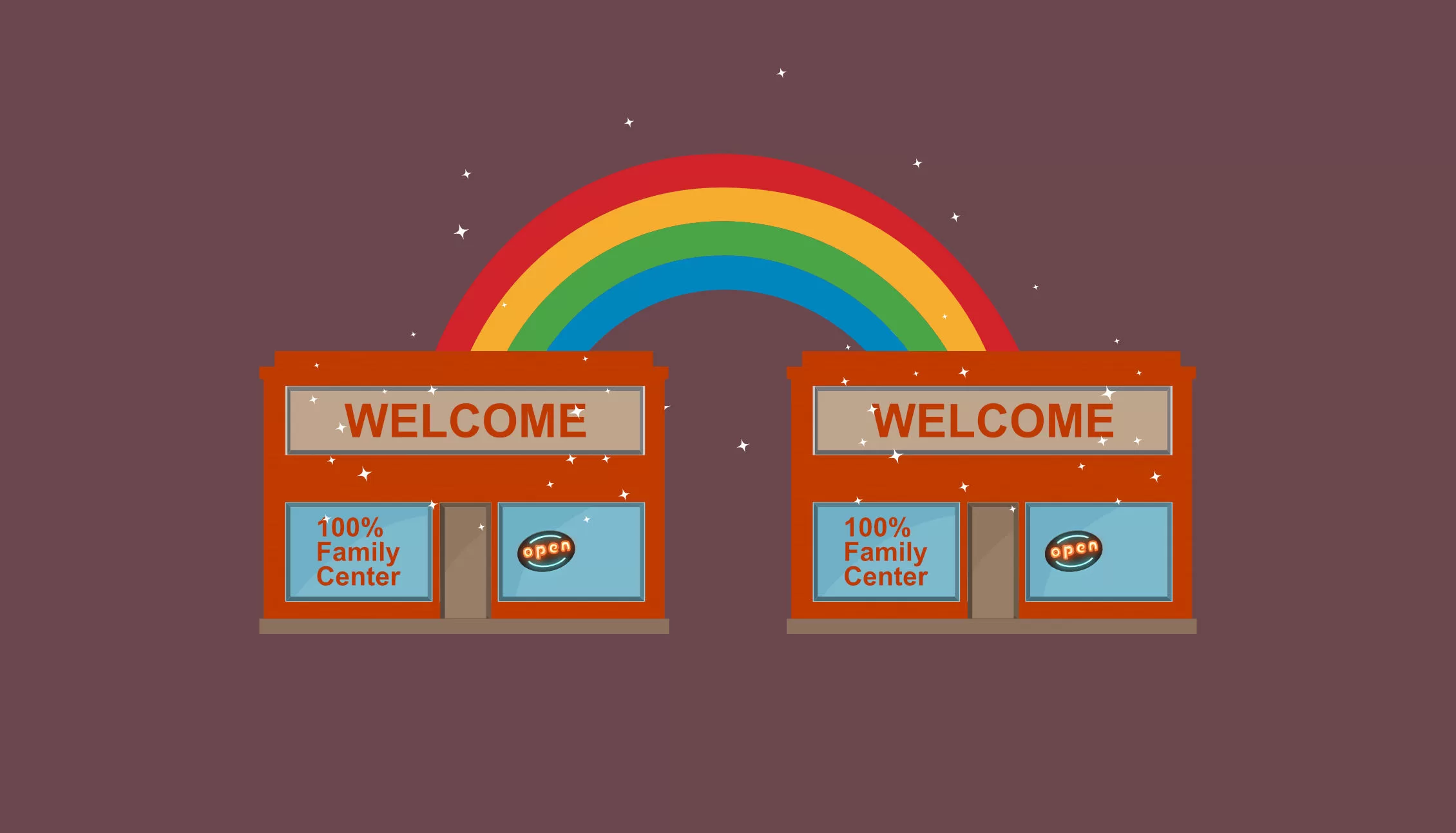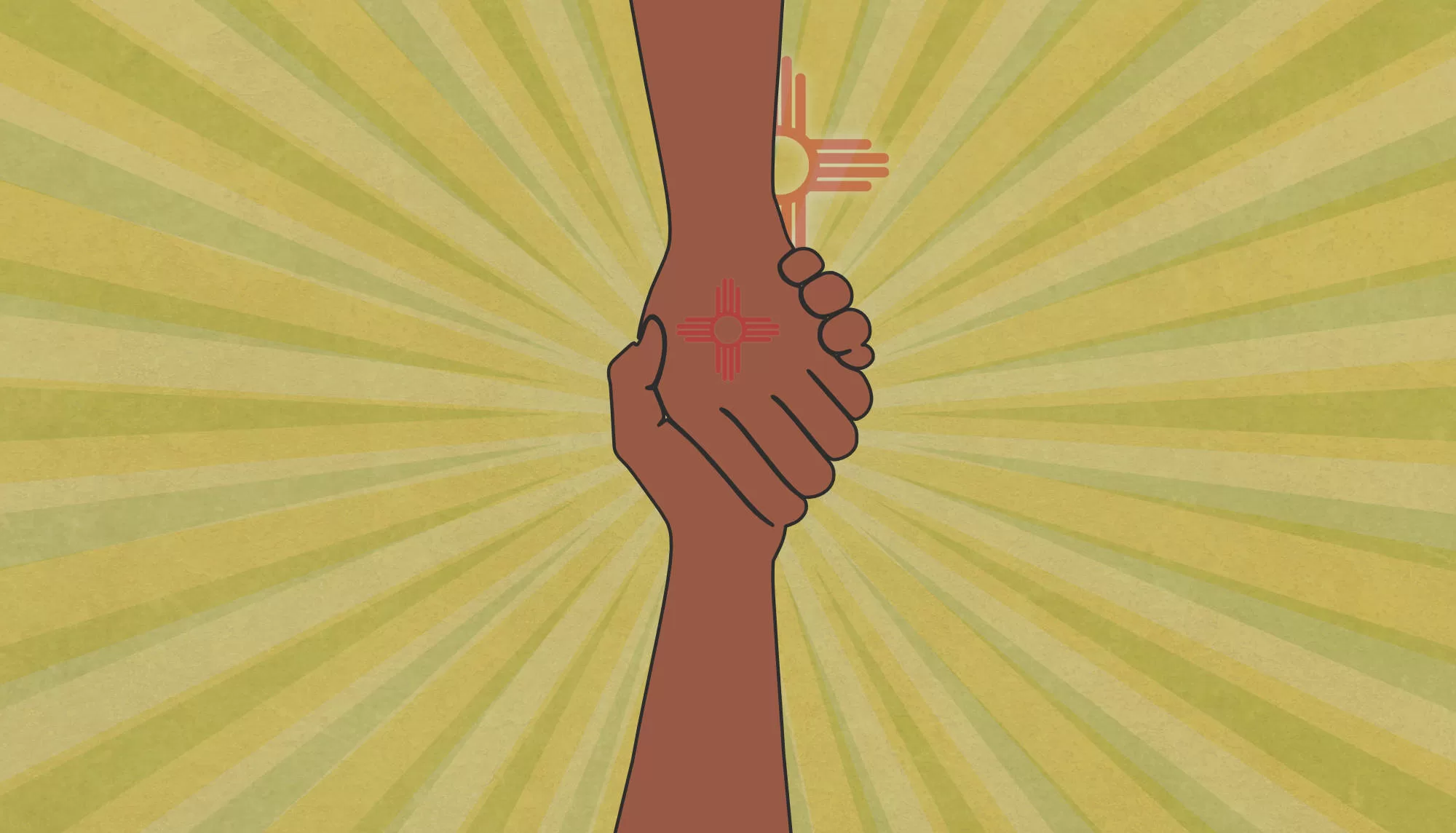How McKinley County, NM Reaches 100%
UNM-Gallup professor Dr. Tracy Lassiter seeks to grow 100% McKinley, creating an engine to ensure ten vital services for surviving and thriving to address adverse childhood experiences, family trauma, and social adversity.
Question: Why do you seek to grow the 100% McKinley initiative?
Tracy Lassiter: As an educator, I have seen my students struggle with issues that interfere with their learning. These range from infrastructural difficulties (good roads or Internet access challenges that prevent class attendance), to family and child care issues, to being able to afford materials or other supplies they may need. Worse, I’ve had students who faced housing and food security issues, safety concerns, health matters, and more. If we want our state to be strong, if we want our students to learn and innovate, if we would like them to contribute meaningfully to local industries and services, then we must address the region’s multiple needs, the needs that 10 Vital Services 100% New Mexico sets out to address.
Question: How might you be able to partner with the Anna, Age Eight Institute at NMSU, UNM-Albuquerque campus, as well as local partners like the health council and NMSU Cooperative Extension, to conduct the 100% New Mexico survey across McKinley County in order to measure how hard it is for residents access vital services like medical care, mental health care, food security programs, affordable housing, housing security programs, transportation, and full service community schools with health centers?
Tracy Lassiter: I’ve lived in New Mexico for nearly six years now. In this time I’ve been involved with activities that have allowed me to meet folks from different agencies and institutions across the state, boots-on-the-ground organizations that are addressing various needs. For example, for a few years in a row, a former UNM-Gallup colleague and I hosted a Women’s HERstory Month resource fair on our campus. We invited all sorts of local and state organizations to have a table for the day; these participants included the local food pantry, youth mentoring programs, health care services, veterans’ services, voter registration, advocacy groups, environmental agencies, and more. One of the most gratifying aspects of the resource fair was seeing members of one group visit the table of another group. I have lists of everyone we’ve ever invited and who attended, so we have a nice head start for coming together once again. I am involved with a few environmental boards that work to make our greater Gallup area greener and healthier. For example, I am on the Sustainable Gallup Board that serves as an advisory body to the mayor and city council. Through that board, we have a way to reach municipal and county leadership for their insight and support.
Finally, our colleagues at UNM-Albuquerque already have commenced several initiatives that address some of our students’ most pressing concerns, offering, for example, a community food pantry on their campus and conducting research on college student hunger rates and other basic needs. The Albuquerque campus leadership has been working more closely with the branch campuses recently in an effort to support students throughout the state. It’s a great interaction in that while they have resources such as research funding, what we at the branch campuses have is knowledge of our students, our communities, their needs, and the agencies who can help us to problem-solve. Currently there’s a great deal of momentum to make these positive changes happen, and I’m excited for the conversations we’ll be holding together.
Question: Who are you reaching out to as you organize the county’s first Anna, Age Eight book club, focused on addressing epidemic rates of adverse childhood experiences that include ten forms of potentially traumatizing abuse and neglect?
Tracy Lassiter: Tammi Moe, who is the director of our Octavia Fellin Public Library, has won the ALA’s “I Love My Librarian” Award for her stewardship, and I hope to collaborate with her as I feel the library provides us a venue whereby we will be able reach the community in a direct and powerful way. I plan to invite some of the people I already know from the boards I currently participate on, particularly since many of them are current or retired educators who are aware of the issues students contend with. Their service in other initiatives, like our local recycling council, means they’re already interested in making positive changes to see our area thrive. But while I expect for this first book club just to invite folks I already know, as I learn more, we will extend the readership of future book clubs to wider networks and other residents. I want to start with a small, familiar circle and grow more book clubs as interest in the issues grows.
Question: Who would you want to see at the table in the form of a 100% McKinley Town Forum this fall, to discuss how to create a robust coalition focused on growing ten family-focused service sectors?
Tracy Lassiter: Well, primarily I’d like to involve city council members, the mayor, and the county commissioners. I’d like them to have an overall sense of 100% New Mexico’s goals with respect to the 10 Vital Services. I think they would be most informed about existing agencies and services in the region. Ideally, I’d like to have it be much larger than that, though, akin to the resource fair we used to host for HERstory Month. In that case, I’d like to include leaders from local health services, transportation businesses, area school leaders, and nonprofits, such as Strengthening Nations (which addresses battered families), the community food pantry, our campus leaders from faculty and administrative ranks, and more. I would love to have this kickoff event be large, bringing as many people into the conversation at first as possible. As we start to talk about various needs, perhaps ideas for collaborative solutions could begin then and there. I’m dreaming big, but I feel it’s the kind of “big dream” that 100% New Mexico is all about.
Question: From your vantage point as an educator, what do you see as the priority issues impacting children, families, and students?
Tracy Lassiter: We need good jobs in this region, particularly given the extremely high unemployment rate. The lack of work, I think, creates a domino effect, like poverty. If you have trouble affording housing, or utilities, or nutritious food, or quality health care, then many other problems arise.
Question: You have been meeting with other 100% New Mexico county leaders to gain insights on how to recruit stakeholders for ten action teams, each one focused on identifying gaps in ten vital services and addressing barriers. What ideas do you wish to bring to McKinley County?
Tracy Lassiter: I have been impressed with the ways other counties have already started to address some of their problems. Each has worked thoughtfully, using 100% New Mexico’s concepts and prompts to start the work, but they do so in ways that are specific to their communities. Some of the ideas, like action teams and community schools, are those the Sustainable Gallup Board members have talked about, coincidentally, as we re-vision our definition of “sustainability” and what we think this area could do in the future. So, forming community action teams and potentially creating community schools are two I responded to most immediately. Clearly, all this work of ensuring vital services across the county will take years to implement fully. I have to remind myself of the long game. I am eager to begin because I feel some needs are so urgent! I’ll feel better, though, as we take any step forward in creating positive change.
Question: You visited the 100% Rio Arriba Mural Project and were able to see first hand how art and culture bring communities together. Can you envision bringing together local artists, muralists, poets, writers, and filmmakers to inspire action? Can you share a little about the creative community in your city and county?
Tracy Lassiter: Woo! Yes! Actually, an idea I stress in one of my English classes is the symbiosis of art and community: a community commissions and creates art; art reflects a particular community. This idea is so important, I regularly take my classes on a walking tour of Gallup’s murals, the ones most centrally located downtown. For some students, it’s their first experience really considering this artwork up close and not just as something they drive by as they go about their errands and whatnot. Plus, the walking tour experience gives me a prime opportunity to connect textbook knowledge with the students’ real lives and communities. What our textbook authors describe are not ideas relegated to some other place like New York City, but are issues facing communities right here: who decides what constitutes art? How do cities and towns decide to commission art work? What are the kinds of public art we encounter on a regular basis? In what ways is public art more “democratic” than museum or gallery pieces?
These ideas connect to 100% New Mexico in profound ways. Are students able to connect their college content with the social issues facing them today? Have they metaphorically “driven past” an issue they could take part in addressing? What are they observing “up close” as they go? Who decides which public priorities get funding and which don’t? What are ways we can make services more widely accessible to the public who need them?
I look forward to connecting Gallup’s creative community with questions like these. Gallup has a strong arts community, as evidenced by the art shown in galleries like Art123 downtown, exhibited in various curated shows, displayed during Intertribal Ceremonial each August, and sold by various vendors. Pre-pandemic, the library hosted a visiting author series each summer. I hope that can come back soon. Our campus publishes the Red Mesa Review of creative writing and poetry; digital editions are online for anyone to read. Finally, even during the pandemic, our campus hosted virtual events like a reading with author and poet Jimmy Santiago Baca. Faculty collaborate to host cool multimodal events, such as when our campus gallery director teams up with a fellow English faculty member. When there’s a special gallery show, such as for Black History Month, campus and community members are invited to see the exhibit and then respond to a prompt they type on typewriters. Finally, I’ll just mention that Gallup used to host a Native American film series at the local El Morro Theater. Some of these events have been curtailed during the pandemic, but they all testify as to the creativity and artistry so prominent in this region.
Question: You helped customize the 100% McKinley website, which houses data on your county’s most costly public health challenges, as well as listing all the local elected leaders who can become supporters of the initiative. Who in your county should explore the website’s “spotlight on health” data page and lawmakers page?
Tracy Lassiter: I hope our city councilors and county commissioners are some of the first to peruse this data as they are critical to this conversation and, often, to funding or legislating any solutions that could emerge. I hope local businesses check out the site, too. They have a stake in these issues as they need trained, reliable, healthy employees to continue their business, and they need customers who can easily reach them. And of course I hope local educators and health care providers also see this information. While they are often on the “front lines” where the data may not be news to them, it could be helpful for them to know a new conversation is underway. But really, I hope anyone from the area who cares about community, who has ideas and energy and enthusiasm to make a real change, catches sight of the page and reaches out. I look forward to our future collaboration and what we can do to help McKinley County, our corner of the state, grow and thrive.
For more information on 100% McKinley and a proposed fall 100% Summit exploring the initiative, visit the 100% McKinley website and email Dr. Tracy Lassiter at UNM-Gallup.
Mission: The 100% New Mexico initiative is dedicated to ensuring that 100% of families can access ten vital services crucial for their overall health, resilience, and success. This university-sponsored endeavor necessitates the local implementation of evidence-based strategies encompassing both community and school-based service hubs, aiming to prevent the most pressing and costly public health and safety challenges, including adverse social determinants of health and adverse childhood experiences.
Don’t miss a blog post! Get notified!
The 100% New Mexico initiative is a program of the Anna, Age Eight Institute at New Mexico State University, College of Agricultural, Consumer and Environmental Sciences, Cooperative Extension Service. Contact: annaageeight@nmsu.edu or visit annaageeight.nmsu.edu to learn more.





